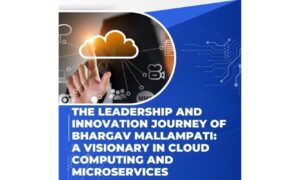Cloud computing has become an essential part of the modern business landscape. It provides organizations with the flexibility and scalability to quickly deploy applications and services. However, due to its distributed nature, it is difficult to monitor and observe the performance of cloud-based systems. This is why observability and monitoring are so important in cloud computing – they allow organizations to gain visibility into their cloud-based systems, ensuring that they are running optimally and securely. By leveraging observability and monitoring tools, businesses can ensure that their cloud-based systems are running smoothly, efficiently, and securely.
Let’s dig deep into the topic.
What is Observability in Cloud Computing?
We define observability as the ability to assess the state of an internal system based on the data it generates. An observability platform enables IT operations teams to simultaneously observe and gain deeper insight into the health and status of various applications and resources across your IT infrastructure. IT teams can proactively detect abnormalities, analyze issues, and resolve problems by gaining insights from each system’s data.
Observability tools analyze the relationships between systems in your company’s multi-layered IT infrastructure, including cloud environments, on-premises software, and third-party applications, using algorithms based on mathematical control theory. These tools then use logs, metrics, and traces to monitor the health and status of your systems, which are known as the three pillars of observability. When the tool detects an anomaly, it alerts the team and provides the data required to quickly troubleshoot and resolve the problem.
Benefits of observability;
It provides insight into a better understanding of the internal workings of production in order to improve end-user experience.
- Applications’ performance is monitored.
- It is simple to identify the root causes of problems, which aids in troubleshooting.
- An intuitive dashboard that displays what is happening in real-time.
- It incorporates a self-healing infrastructure.
- Information is easily accessible.
Monitoring is a practice that allows SRE and Ops teams to examine and comprehend the various states of their system. This can be accomplished using pre-established metrics and dashboard reports that are constantly updated in real time.
What is Monitoring in Cloud Computing?
Monitoring is required for observability. Monitoring is generally defined as the collection and analysis of data from IT systems. Cloud computing monitoring employs dashboards, which are frequently created by your internal team, to measure the health of your applications by tracking specific metrics.
Monitoring assists IT teams in detecting and resolving problems by providing information about your application’s usage patterns. However, for monitoring to be effective, you must first determine which metrics to track. That means that data you aren’t tracking could reveal issues, but those issues will continue to fly under the radar.
Benefits of Monitoring
- There are numerous advantages to using cloud monitoring. Even businesses that only use a private cloud architecture can benefit from key cloud monitoring deliverables such as:
- Improving cloud application and network security
- Simplifying continuity plan implementation and enabling proactive (rather than reactive) risk mitigation
- Obtaining and sustaining optimal application performance
- Increasing service availability through rapid issue reporting and resolution
- Reduced surprise cloud cost leaks because of complete architecture visibility
- Event cloud activity grows due to simple scaling.
- Usability across multiple devices, with constant cloud awareness
The Relationship Between Observability and Monitoring
Observability and monitoring are complementary, with each serving a distinct purpose.
Monitoring alerts you when something is wrong, while observability explains why. Monitoring is a subset of observability and critical action. Only observable systems can be monitored.
Monitoring keeps track of an application’s overall health. It collects information about how the system performs in terms of access speeds, connectivity, downtime, and bottlenecks. By providing granular and contextual insight into its specific failure modes, observability, on the other hand, drills down into the “what” and “why” of application operations.
While monitoring only provides answers to known problems or occurrences, software instrumented for observability enables developers to ask new questions to debug a problem or gain insight into the general state of a dynamic system with changing complexities and unknown permutations.
Conclusion
Monitoring and observability are more than just buzzwords; they are critical and practical techniques for assessing the overall health of your infrastructure. Cloud computing, containerization, microservices, and other technologies have increased system complexity to unprecedented levels.
Complex systems rely on effective monitoring tools designed specifically for cloud-based environments; however, using these tools does not guarantee observability, because observability is a broad term that encompasses the entire system. Finally, whatever observability solutions you choose should be adaptive and scalable in order to grow your business.


































